A black body radiates heat at temperatures T1 and T2(T2>T1 the frequency corresponding to maxium energy is
more at T1
more at T2
equal for T1andT2
independent of T1andT2
The correct Answer is:B
E∝T4
E2 greater for T2 (As T2>T1) .
Topper's Solved these Questions
- KINETIC THEORY OF GASES & RADIATION BOOK - NIKITA PUBLICATIONCHAPTER - KINETIC THEORY OF GASES & RADIATION EXERCISE - MCQs (Newtons Law of Cooling)
40 Videos
- INTERFERENCE AND DIFFRACTIONBOOK - NIKITA PUBLICATIONCHAPTER - INTERFERENCE AND DIFFRACTIONEXERCISE - MULTPLE CHOICE QUESTIONS
333 Videos
- MAGNETIC EFFECT OF ELECTRIC CURRENTBOOK - NIKITA PUBLICATIONCHAPTER - MAGNETIC EFFECT OF ELECTRIC CURRENTEXERCISE - MCQs (Sensitivity and accuracy of M.C.G.)
1 Videos
Similar Questions
Fig, shows a system of two concentric spheres of radii r1 andr2 and kept at temperature T1 and T2(T1>T2) respectively. Find the expression for radial rate of flow of heat through the substance.

View SolutionA black body emits maximum radiation of wavelength λ1 at a certain temperature T1. On increasing the temperature, the total energy of radiation emitted is increased 16 times at temperature T2. If λ2 is the wavelength corresponding to which maximum radiation is emitted at temperature T2. Calculate the value of (λ1λ2).
View Solution
Knowledge Check
Shown below are the black body radiation curves at temperature T1 and T2(T2>T1). Which of the following plots is correct?
A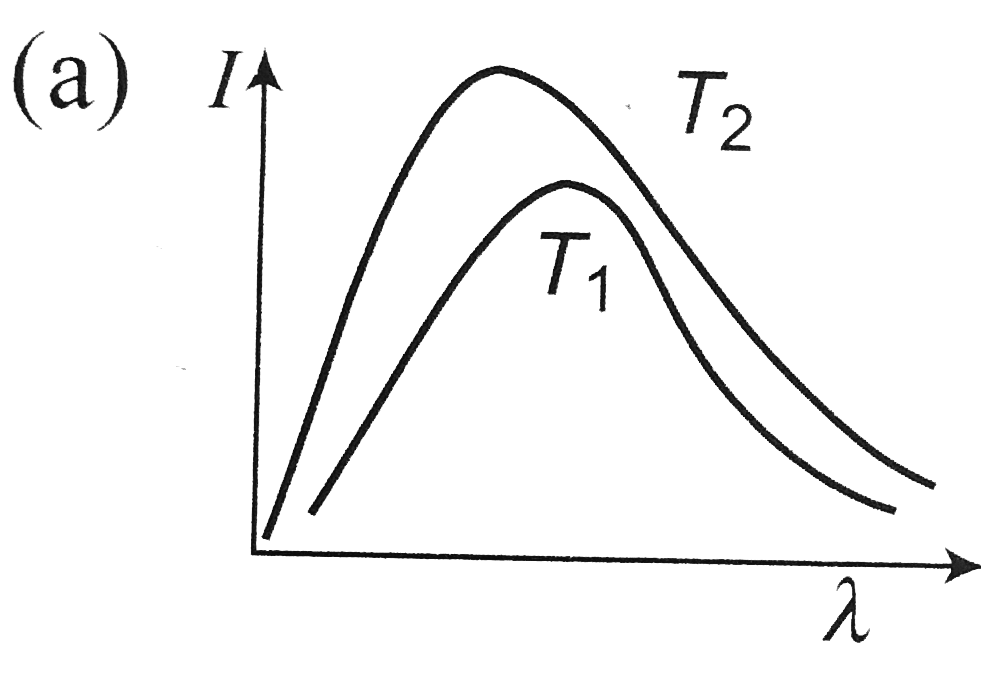 B
B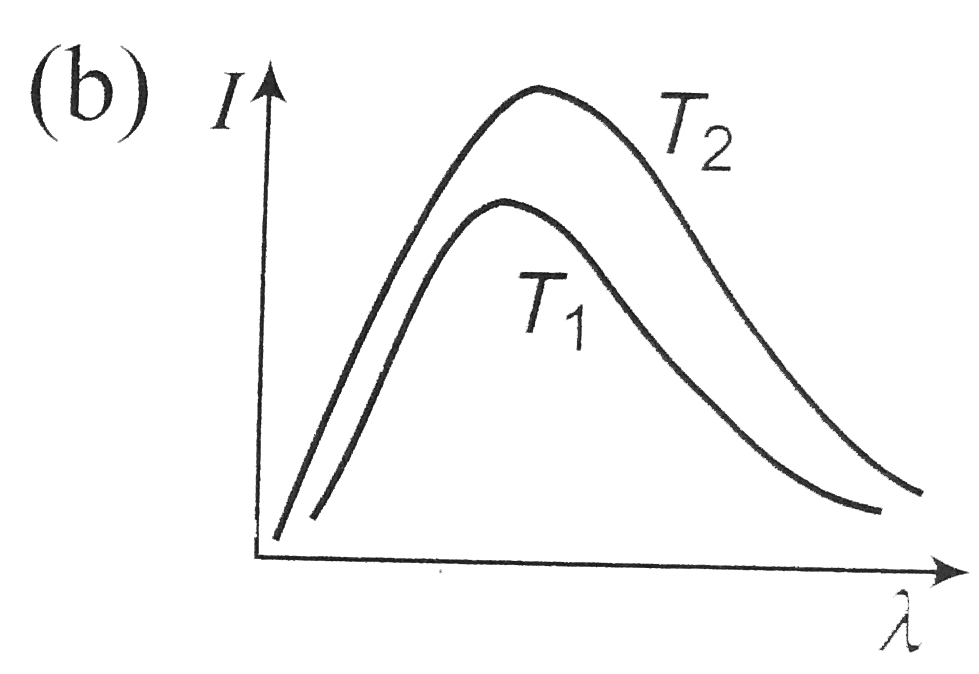 C
C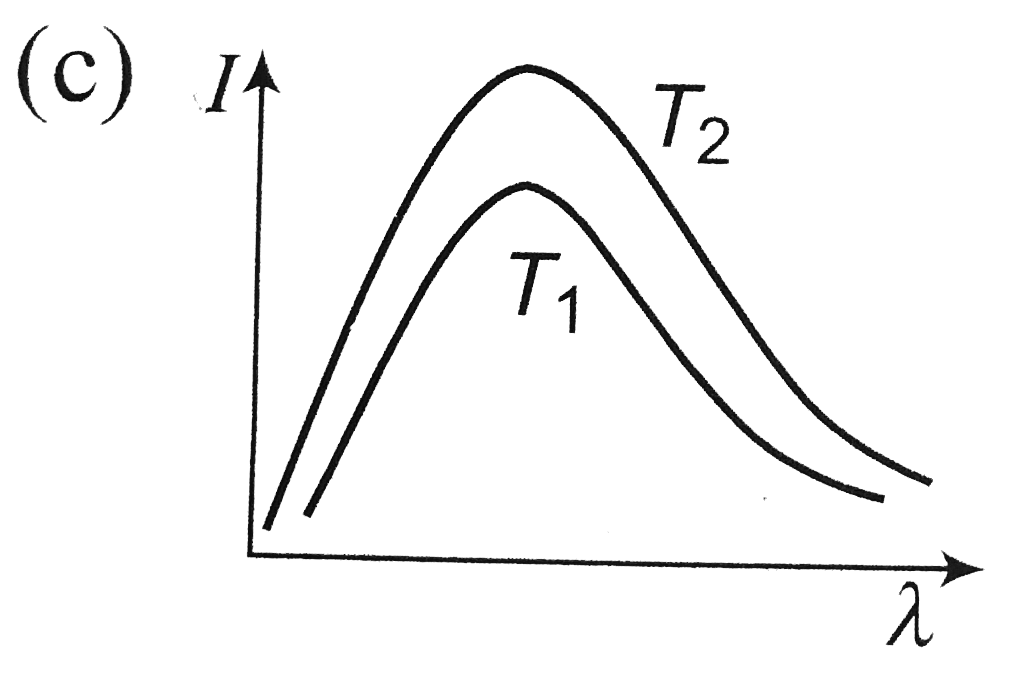 D
D
The plots of intensity vs wavelength for two black bodies at temperature T1 and T2 such that T2=2T1, respectively are as shown. Let the energy radiated per second by body I and body 2 be E1 and E2 respectively. Pick up the correct statement(s).
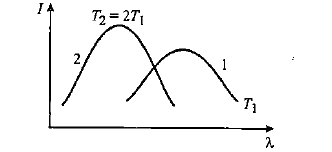 AE1=16E2BE1may be equal to 16 times of E2CThe area under curve 1 and area under curve 2 will be sameDArea under curve 2 is larger than area under curve 1
AE1=16E2BE1may be equal to 16 times of E2CThe area under curve 1 and area under curve 2 will be sameDArea under curve 2 is larger than area under curve 1Show below are the black body radiation curves at temperature T1 and T2(T2>T1). Which of the following plots is correct?
A B
B C
C D
D
When two bodies ofmasses m1 and m2 with specific heats s1 and s2 at absolute temperatures T10 and T20(T10>T20) are connected by a rod of length l and cross sectional area A with thermal conductivity k. Find the temperature difference of the bodies after time t. Neglect any heat loss due to radiation at any surface..

View SolutionSelect the graph that correctly describes the adsorption isotherms at two temperatures T1 and T2(T1>T2) for a gas : (x — mass of the gas adsorbed m-mass of adsorbent P - pressure)
View SolutionA black body emits maximum radiation of wavelength is λ1= 2000 Å at a certain temperature T1. On increasing the temperature, the total energy of radiation emitted is increased 16 times at temperature T2 .If λ2 is the wavelength corresponding to which maximum radiation emitted at temperature T2 Calculate the value of (λ1λ2)
View SolutionThe two ends of a rod of length L and a uniform cross-sectional area A are kept at two temperature T1 and T2 (T1>T2). The rate of heat transfer. dQdt, through the rod in a steady state is given by
View SolutionFor a reaction, A⇔P, the plots of [A[ and [P] with time at temperature T1andT2 are given ahead:
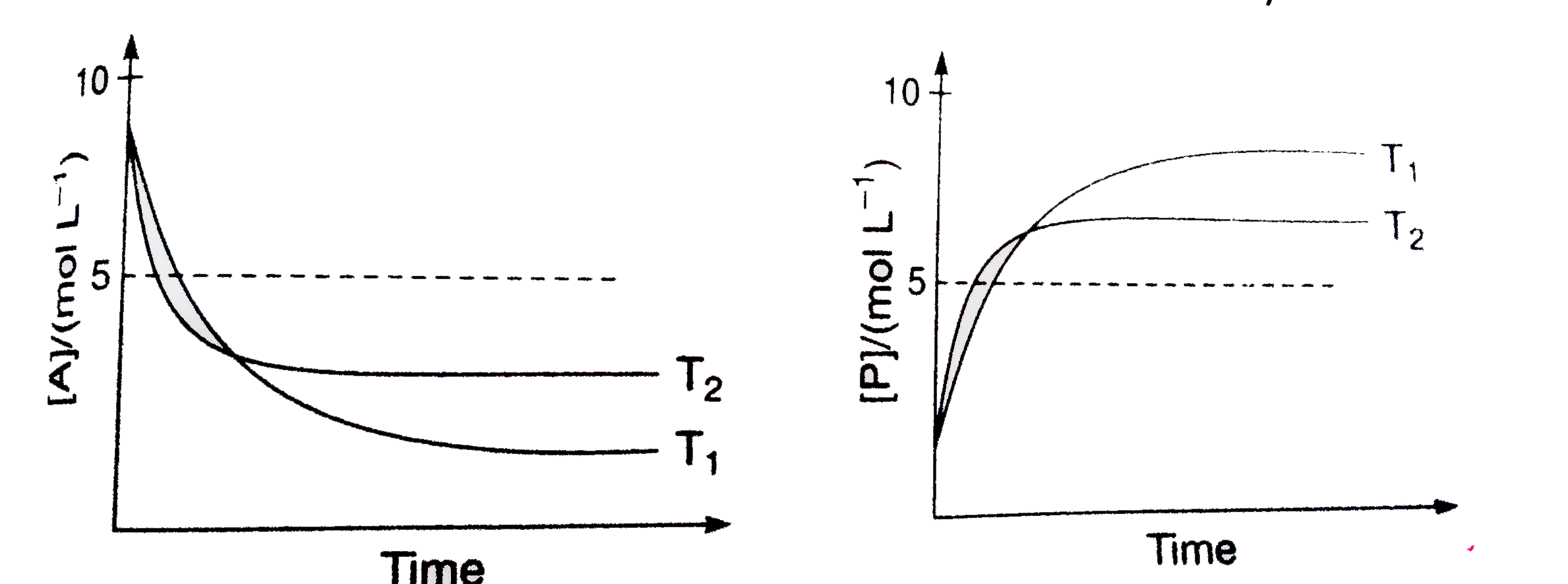 .
.
If T1>T1, the correct statement(s) is (are):
(Assume ΔH∘ and ΔS∘ are independent of temperature and ratio of ln K at T1 to ln K at T2 as greater than T2T1. Here, H,S,G and K are enthalpy, entropy, Gibbs energy and equilibrium constant, respectively.
View Solution
